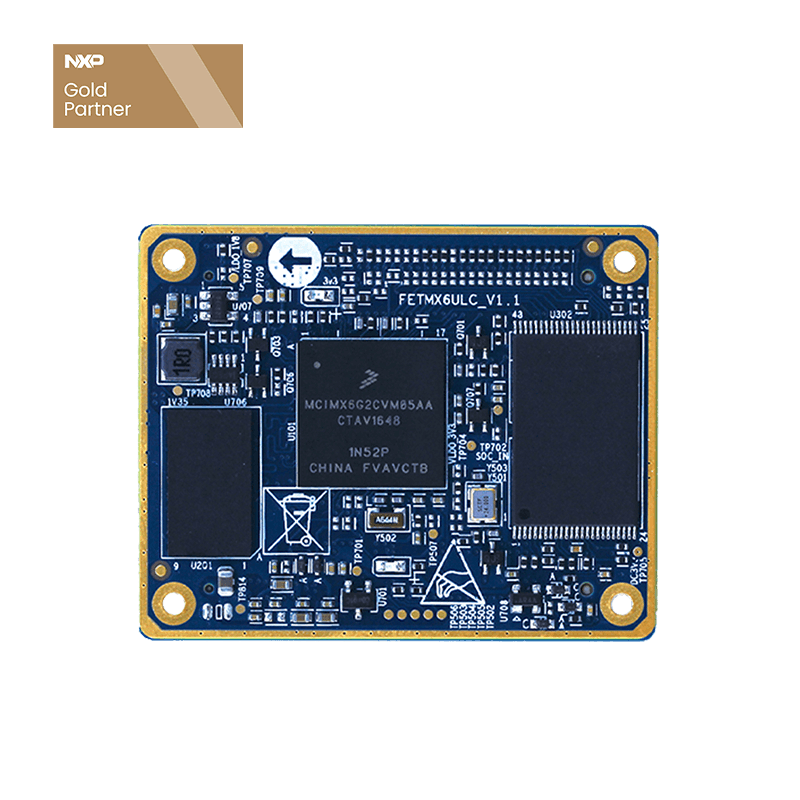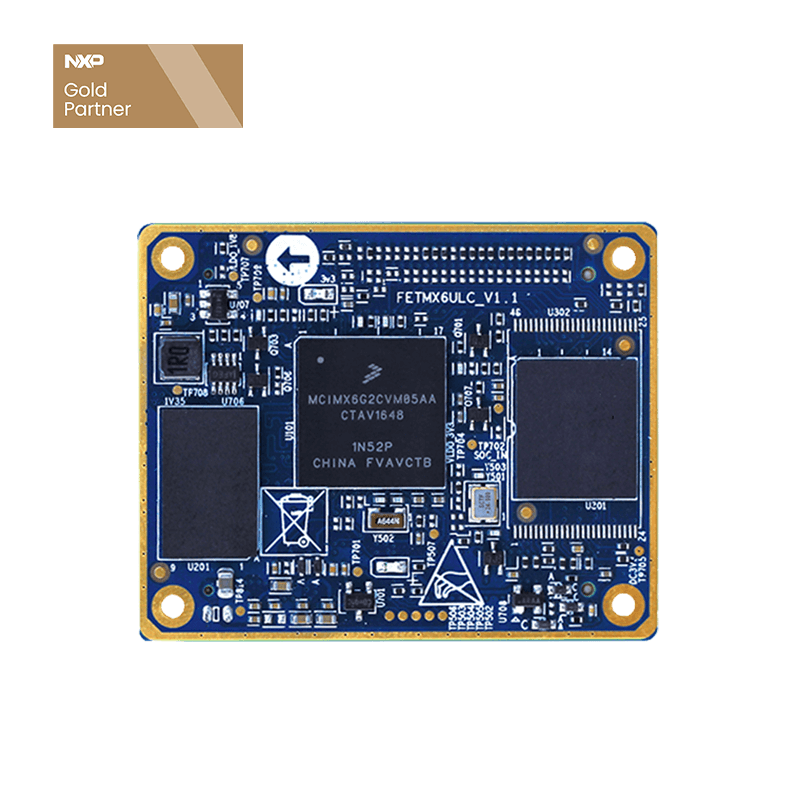
About the Application of Forlinx FETMX6UL-C Core Board in RFID RF Technology
First. background
With the development of the Internet of Things, radio frequency identification (RFID) technology is more and more applied to industrial sites. RFID is fully known in English as Radio Frequency IDentification and Chinese translated as Radio Frequency Identification. It was born in the 1950s as a wireless identification technology that can be identified using radio without contact.
In the field of radio frequency, electromagnetic waves are divided into 6 parts by frequency. RFID main frequency bands: low frequency, high frequency, UHF and microwave.
Low frequency (30 to 300kHz)
Common operating frequencies are low frequency 125kHz and 134.2kHz, low frequency RFID is mainly used in short-distance, low-cost applications, such as access control, campus cards, gas meters, water meters and so on.
High frequency (3 to 30MHz)
The radio frequency identification equipment of the high frequency HF operates in the 13.56MHz band, and the system transmits energy through the inductive coupling of the antenna coil, and the magnetic field energy decreases faster by inductive coupling. Magnetic field signals have distinct read area boundaries. Mainly used for the identification of persons or items within 1 meter. There are two main protocols: ISO/IEC14443 (A, B) and ISO/IEC15693.
The main application:
- One card;
- Mobile payments;
- Second-generation ID card;
- Access attendance;
- The application of library management system;
- Home school pass;
- Management and application of garment production lines and logistics systems;
- Open people management;
- Management and application of hotel door locks;
- Large meeting personnel channel system;
UHF (300MHz to 3GHz) or microwave 2.45GHz
Common operating frequencies are 860MHz to 930MHz. UHF is used in applications that require long reading and writing distances and high reading and writing speeds, such as train monitoring, highway tolls and other systems, but the antenna beam direction is narrow and higher price. In addition, UHF RFID products are often used in supply chain management.
Second, the composition of the RFID system
An RFID system is generally composed of four parts: electronic tags, antennas, readers and applications.
(1) Electronic labels are similar to barcodes in a barcode system, and are internally integrated with a rewritable chip to store information. Depending on whether or not to have a battery, electronic tags are divided into active and passive. Active electronic label with battery, compared with passive electronic label, readable distance is far; (Also divided into ordinary UHF labels and special labels)
For example, according to the operating frequency classification can be divided into low, medium, ultra-high frequency and other electronic labels, according to the energy consumption classification of active electronic labels, passive electronic labels, according to the type of memory can be divided into read-only and readable two categories, according to the application classification can be divided into :
- 1, logistics labels are mainly used in logistics and transportation, logistics warehouse management and electronic label assisted picking system.
- 2, book labels are mainly used in library management, book distribution management and so on
- 3, anti-metal labels are mainly used in office equipment management, enterprise asset management, production management and so on
Other labels include clothing labels, laundry labels, livestock management labels, medical labels, security and anti-theft labels, tire management labels, supermarket retail labels, etc., with the available of electronic label technology, its application is more and more extensive, in various fields in various industries have a wide range of applications.
(2) Antenna: generally connected to the reader, used to receive/ send electromagnetic waves;
(3) Reader: used to read the data of electronic tags and transmit them to the application software system of the upper computer; Some can also write data to electronic tags;
(4) Application software: PC-based or PLC-based software system, used to process the data sent by the reader;
Third. Scenario overview
Reader is the core part of the whole RIFD system. The hardware of the reader is usually composed of antenna, RF module, control module and interface. The control module is the core of the reader and reader, and is usually composed of ASIC components and microprocessors. The signal processed by the control module is transmitted to the reader antenna via the RF module and transmitted by the reader antenna. The data exchange between the control module and the application software is mainly done through the reader's interface.
Forlinx Embedded Technology Co., Ltd. focused on embedded development for more than 10 years, has accumulated a wealth of embedded development software and hardware solutions with Samsung, TI, NXP has established a close cooperative relationship, and become TI, NXP official IDH identity. Forlinx's products cover the core board of Cortex-A7, Cortex-A8, Cortex-A9, Cortex-A15, Cortex-A53 and other architectures, and users can purchase the most fully functional and informative DEMO board cards to quickly build a product development environment and successfully complete the functional testing and marketing of the product.
FETMX6UL-C Industrial-Grade SoM
Interface features:
- 1. Network: the data exchange between the reader control module and the application software, mainly through the reader interface, the interface can be RS-232, RS-485, RJ-45, USB2.0 or Wi-Fi interface.
- 2. RS-232, generally used for debugging,
- 3. GPIO interface: input trigger, can be connected to infrared device trigger work. Simply put, the device is dormant and you can trigger the device to work with an external photoelectric signal.
- 4. Antenna: there are 4 channels, 8 channels, 12 channels, etc., take 4 channels for example: can be with different sizes of antennas to work. Generally the largest antenna can operate at a distance of 25 meters, the smallest can be 5 meters. Antennas are rotating and can only work with one antenna at a time, because the amplifier has only one. Control via software.
Advantage:
- 1. Low power consumption, desktop, handheld devices are available
- 2. Low price, cost-effective
- 3. The functional interface is complete and can be upgraded remotely. Fully meet customer needs
- 4. Compared with microcontrollers: microcontrollers are not conducive to expansion, and when the amount of data is large, single-product machines can not be satisfied, microcontrollers, some software can not do, need to run Linux system.
Four. Radio Frequency Identification (RFID) technology can be widely used in logistics, access control, production lines, stations, intelligent manufacturing and other industries. Here are the app descriptions for the apparel industry: for example, if you take stock, use a handheld. Control warehouse access, you can use the four channels to help you guard the door



